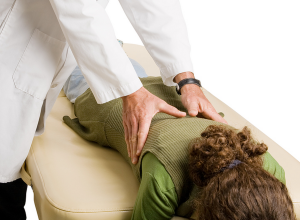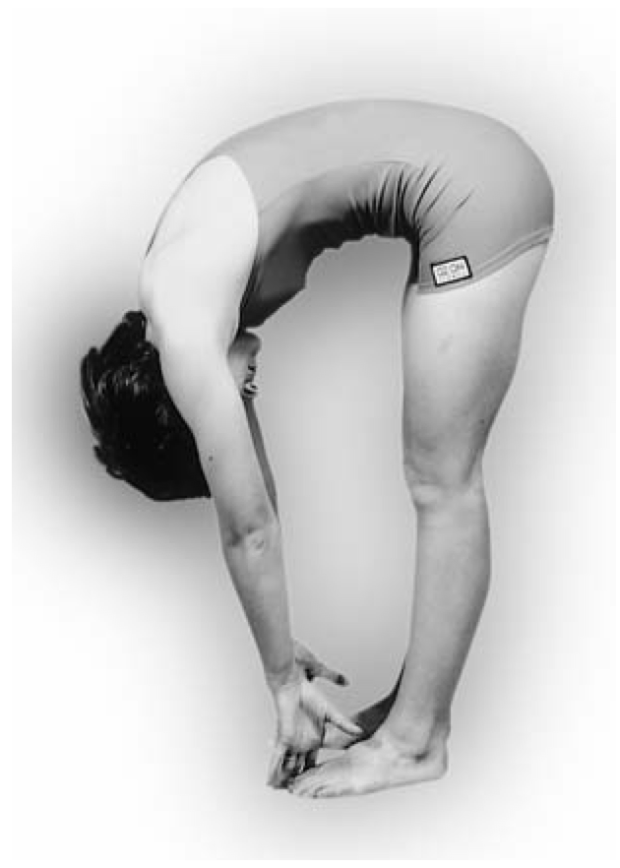Author Archive

At least 70 percent of America’s 30 million elementary school students use computers, according to a recent New York Times article. As a result of this increased usage, doctors of chiropractic are treating more young patients suffering from the effects of working at computer stations that are either designed for adults or poorly designed for children. Many children are already suffering from repetitive motion injuries (RMI) such as carpal tunnel syndrome and chronic pain in the hands, back, neck and shoulders.
A recently published study conducted by a team of researchers from Cornell University found that 40 percent of the elementary school children they studied used computer workstations that put them at postural risk. The remaining 60 percent scored in a range indicating “some concern.”
“Emphasis needs to be placed on teaching children how to properly use computer workstations,” stated Dr. Scott Bautch, a member of the American Chiropractic Association’s Council on Occupational Health. “Poor work habits and computer workstations that don’t fit a child’s body during the developing years can have harmful physical effects that can last a lifetime. Parents need to be just as concerned about their children’s interaction with their computer workstations as they are with any activities that may affect their children’s long-term health,” added Dr. Bautch.
What can you do?
To reduce the possibility of your child suffering painful and possibly disabling injuries, the American Chiropractic Association (ACA) and its Council on Occupational Health offer the following tips:
- If children and adults in your home share the same computer workstation, make certain that the workstation can be modified for each child’s use.
- Position the computer monitor so the top of the screen is at or below the child’s eye level. This can be accomplished by taking the computer off its base or stand, or having the child sit on firm pillows or phone books to reach the desired height.
- Make sure the chair at the workstation fits the child correctly. An ergonomic back cushion, pillow or a rolled-up towel can be placed in the small of the child’s back for added back support. There should be two inches between the front edge of the seat and the back of the knees. The chair should have arm supports so that elbows are resting within a 70- to 135-degree angle to the computer keyboard.
- Wrists should be held in a neutral position while typing – not angled up or down. The mousing surface should be close to the keyboard so your child doesn’t have to reach or hold the arm away from the body.
- The child’s knees should be positioned at an approximate 90- to 120-degree angle. To accomplish this angle, feet can be placed on a foot rest, box, stool or similar object.
- Reduce eyestrain by making sure there is adequate lighting and that there is no glare on the monitor screen. Use an antiglare screen if necessary.
- Limit your child’s time at the computer and make sure he or she takes periodic stretch breaks during computing time. Stretches can include: clenching hands into fists and moving them in 10 circles inward and 10 circles outward; placing hands in a praying position and squeezing them together for 10 seconds and then pointing them downward and squeezing them together for 10 seconds; spreading fingers apart and then closing them one by one; standing and wrapping arms around the body and turning all the way to the left and then all the way to the right.
- Your child’s muscles need adequate hydration to work properly and avoid injury. Encourage your child to drink four 8-ounce glasses of water a day. Carbonated beverages, juices and other sweet drinks are not a substitute.
- Urge your child’s school or PTA officials to provide education on correct computer ergonomics and to install ergonomically correct workstations.
“If your child continues to complain of pain and strain from sitting at a computer, see a doctor of chiropractic,” urges Dr. Bautch. “A chiropractor can help alleviate your child’s pain and help prevent further injury.”
What is chiropractic? Here is a great FAQ from the ACA


Like your car, your eyes and your teeth, your spine requires maintenance to function at its best! Get checked for alignment and balance regularly!
A review from Tam H. from Saratoga, CA:

OUTSTANDING care, knowledge, skills, and methods! I have been to three other chiropractors, and Dr. Brad is the best. I took my 83 year old mom there, who, by default, is very mistrusting of doctors and resistant to receiving medical help. She came in with leg, foot, and shoulder pain. Dr. Brad listened to my mom talk, and through this process, was able to determine the root of her problems. He asked numerous questions, tested and re-tested different areas to see the body’s response, and has been using a wide variety of modalities in her treatment. Dr. Brad is one of kind. He is innovative in his approach, intuitive in his decisions, and works according to the body’s response. Since I take my mom to her appointments, I am able to sit in on her treatments. It is FASCINATING to watch what Dr. Brad does, and he does an excellent job explaining to me and my mom what he is doing and why. He is not a “one-size fits all” doctor who gives the standard procedure to each patient. Dr. Brad goes the extra mile with my mom’s individual needs and spends the needed time with her. My mom and I are so impressed with Dr. Brad’s high quality care!!

• Keep your feet on the floor or on a footrest, if they don’t reach the floor.
• Don’t cross your legs. Your ankles should be in front of your knees.
• Keep a small gap between the back of your knees and the front of your seat.
• Your knees should be at or below the level of your hips.
• Adjust the backrest of your chair to support your low- and mid-back or use a back support.
• Relax your shoulders and keep your forearms parallel to the ground.
• Avoid sitting in the same position for long periods of time.
- Low back pain is the single leading cause of disability worldwide, according to the Global Burden of Disease 2010.
- One-half of all working Americans admit to having back pain symptoms each year.
- Back pain is one of the most common reasons for missed work. In fact, back pain is the second most common reason for visits to the doctor’s office, outnumbered only by upper-respiratory infections.
- Most cases of back pain are mechanical or non-organic—meaning they are not caused by serious conditions, such as inflammatory arthritis, infection, fracture or cancer.
- Americans spend at least $50 billion each year on back pain—and that’s just for the more easily identified costs.
- Experts estimate that as many as 80% of the population will experience a back problem at some time in our lives.
- Maintain a healthy diet and weight.
- Remain active—under the supervision of your doctor of chiropractic.
- Avoid prolonged inactivity or bed rest.
- Warm up or stretch before exercising or other physical activities, such as gardening.
- Maintain proper posture.
- Wear comfortable, low-heeled shoes.
- Sleep on a mattress of medium firmness to minimize any curve in your spine.
- Lift with your knees, keep the object close to your body, and do not twist when lifting.
- Quit smoking. Smoking impairs blood flow, resulting in oxygen and nutrient deprivation to spinal tissues.
- Work with your doctor of chiropractic to ensure that your computer workstation is ergonomically correct.
The hamstrings run through the back of each thigh. Tightness in this muscle limits motion in the pelvis which can increase stress across the low back and corrupt correct posture. Stretching the hamstrings with these following exercises (or as part of a routine of back exercises) can gradually lengthen them and reduce the stress felt in the lower back.
Options for hamstring stretching exercises, listed from most difficult to least difficult, include:
Standing Hamstring Stretch
This is the most common technique. While standing, simply bend forward at the waist with arms hanging down and with legs relatively straight. Try to touch the toes but do not strain to do so. Stop when a stretch is felt in the hamstring.





